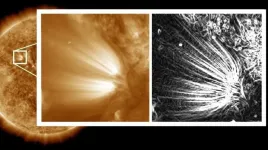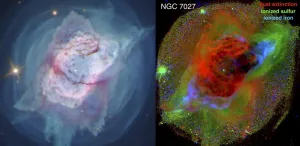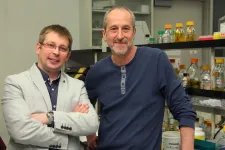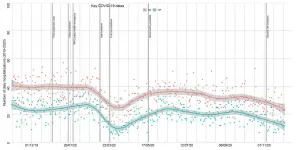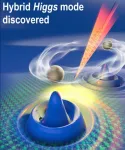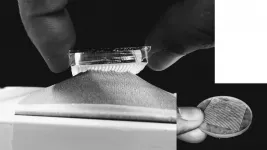INFORMATION:
The research was supported by the CALS Active Learning Initiative Grants Program.
Appearance, social norms keep students off Zoom cameras
2021-01-19
(Press-News.org) ITHACA, N.Y. - When the semester shifted online amid the COVID-19 pandemic last spring, Cornell University instructor Mark Sarvary, and his teaching staff decided to encourage - but not require - students to switch on their cameras.
It didn't turn out as they'd hoped.
"Most of our students had their cameras off," said Sarvary, director of the Investigative Biology Teaching Laboratories in the College of Agriculture and Life Sciences (CALS).
"Students enjoy seeing each other when they work in groups. And instructors like seeing students, because it's a way to assess whether or not they understand the material," Sarvary said. "When we switched to online learning, that component got lost. We wanted to investigate the reasons for that."
Sarvary and co-instructor Frank Castelli, a CALS Active Learning Initiative education postdoctoral researcher, surveyed the 312 students in the class at the end of the semester to figure out why they weren't using their cameras - and to try to come up with ways to turn that trend around.
They found that while some students had concerns about the lack of privacy or their home environment, 41% of the 276 respondents cited their appearance, and more than half of those who selected "other" as their reason for keeping their camera off explained that it was the norm. This suggested that explicitly encouraging camera use could boost participation without adverse effects, the researchers said.
"We felt it would create an undue burden and add stress in an already stressful time to require the cameras to be on, and we found this could disproportionately affect certain groups of students, such as underrepresented minorities," said Castelli, first author of "Why Students Do Not Turn on Their Video Cameras During Online Classes and an Equitable and Inclusive Plan to Encourage Them to Do So," which published Jan. 10 in Ecology and Evolution.
In the survey, Castelli and Sarvary found that among underrepresented minorities, 38% said they were concerned about other people being seen behind them, and 26% were concerned about their physical location being visible; while among non-underrepresented minorities, 24% were worried about people behind them and 13% about their physical locations.
"It's a more inclusive and equitable strategy to not require the cameras but to instead encourage them, such as through active learning exercises," Castelli said. "This has to be done carefully so it doesn't create an environment where you're making those without cameras on feel excluded. But at the same time, if you don't explicitly ask for the cameras and explain why, that can lead to a social norm where the camera is always off. And it becomes a spiral of everyone keeping it off, even though many students want it on."
Establishing camera use as the norm, explaining the reasons that cameras improve the class and employing active learning techniques and icebreakers, such as beginning each class with a show-and-tell, are techniques that could boost participation, the authors suggested in the study.
"Active learning plays an important role in online learning environments," Sarvary said. "Students may feel more comfortable turning on their cameras in breakout rooms. Polling software or Zoom chats are alternatives that can help the instructor assess student learning, even without seeing nodding or smiling or confused expressions."
The authors also suggested instructors address potential distractions, give breaks to help maintain attention, and poll their students to learn about other potential barriers to camera use or participation.
Though they have not yet formally studied the effect, the instructors in the 24 sections of the laboratory class all observed improved camera participation when they used some of these strategies last fall.
"We wanted to develop an engaging and inclusive virtual learning environment, using the best pedagogical methods," Sarvary said. "That's why we wanted to know why the students are not turning their cameras on, rather than just assuming or, as some instructors do, requiring them to turn their cameras on. We wanted to take an education research approach and figure out the best practices."
ELSE PRESS RELEASES FROM THIS DATE:
NASA explores solar wind with new view of small sun structures
2021-01-19
Scientists have combined NASA data and cutting-edge image processing to gain new insight into the solar structures that create the Sun's flow of high-speed solar wind, detailed in new research published today in The Astrophysical Journal. This first look at relatively small features, dubbed "plumelets," could help scientists understand how and why disturbances form in the solar wind.
The Sun's magnetic influence stretches billions of miles, far past the orbit of Pluto and the planets, defined by a driving force: the solar wind. This constant outflow of solar material carries the Sun's magnetic field out into space, where it shapes the environments around Earth, other worlds, and in the reaches of deep space. Changes in the solar wind ...
Astronomers dissect the anatomy of planetary nebulae using Hubble Space Telescope images
2021-01-19
Images of two iconic planetary nebulae taken by the Hubble Space Telescope are revealing new information about how they develop their dramatic features. Researchers from Rochester Institute of Technology and Green Bank Observatory presented new findings about the Butterfly Nebula (NGC 6302) and the Jewel Bug Nebula (NGC 7027) at the 237th meeting of the American Astronomical Society on Friday, Jan. 15.
Hubble's Wide Field Camera 3 observed the nebulae in 2019 and early 2020 using its full, panchromatic capabilities, and the astronomers involved in the project ...
Unlocking 'the shape of water' in mechanisms of antibiotic resistance
2021-01-19
New high-resolution structures of the bacterial ribosome determined by researchers at the University of Illinois Chicago show that a single water molecule may be the cause -- and possible solution -- of antibiotic resistance.
The findings of the new UIC study are published in the journal Nature Chemical Biology.
Pathogenic germs become resistant to antibiotics when they develop the ability to defeat the drugs designed to kill them. Each year in the U.S., millions of people suffer from antibiotic-resistant infections, and thousands of people die as a result.
Developing new drugs is a key way the scientific community is trying to reduce the impact of antibiotic resistance.
"The first thing we need to do to make improved drugs is to better understand how antibiotics work and how 'bad ...
Heart attack patients in England 'fearful' of seeking medical help amid COVID crisis
2021-01-19
Data analysis is revealing a second sharp drop in the number of people admitted to hospital in England with acute heart failure or a heart attack.
The decline began in October as the numbers of COVID-19 infections began to surge ahead of the second lockdown, which came into force in early November.
The findings, from a research group led by the University of Leeds, have been revealed in a letter to the Journal of the American College of Cardiology.
The decline - 41 percent fewer people attending with heart failure and 34 percent with a heart attack compared to pre-pandemic levels ...
Brain cell network supplies neurons with energy
2021-01-19
The human brain has about as many neurons as glial cells. These are divided into four major groups: the microglia, the astrocytes, the NG2 glial cells, and the oligodendrocytes. Oligodendrocytes function primarily as a type of cellular insulating tape: They form long tendrils, which consist largely of fat-like substances and do not conduct electricity. These wrap around the axons, which are the extensions through which the nerve cells send their electrical impulses. This prevents short circuits and accelerates signal forwarding.
Astrocytes, on the other hand, supply the nerve cells with energy: Through their appendages they come into contact with blood vessels and absorb glucose from these. ...
Light-controlled Higgs modes found in superconductors; potential sensor, computing uses
2021-01-19
AMES, Iowa - Even if you weren't a physics major, you've probably heard something about the Higgs boson.
There was the title of a 1993 book by Nobel laureate Leon Lederman that dubbed the Higgs "The God Particle." There was the search for the Higgs particle that launched after 2009's first collisions inside the Large Hadron Collider in Europe. There was the 2013 announcement that Peter Higgs and Francois Englert won the Nobel Prize in Physics for independently theorizing in 1964 that a fundamental particle - the Higgs - is the source of mass in subatomic ...
New COVID-19 model shows little benefit in vaccinating high-risk individuals first
2021-01-19
BROOKLYN, New York, Tuesday, January 19, 2021 - The World Health Organization END ...
Fastener with microscopic mushroom design holds promise
2021-01-19
WASHINGTON, January 19, 2021 -- A Velcro-like fastener with a microscopic design that looks like tiny mushrooms could mean advances for everyday consumers and scientific fields like robotics.
In Biointerphases, published by AIP Publishing, researchers from Wageningen University in the Netherlands show how the design can use softer materials and still be strong enough to work.
Probabilistic fasteners work, because they are designed with a tiny pattern on one surface that interlocks with features on the other surface. Currently available fasteners, like Velcro and 3M, are called hook and loop fasteners. That design requires harder, stiff material, which ...
Individual and organizational capacity to change can reduce health care workforce burnout
2021-01-19
Even prior to the pandemic, burnout among health care professionals was a pervasive public health concern, with END ...
Land deals meant to improve food security may have hurt
2021-01-19
Large-scale land acquisitions by foreign investors, intended to improve global food security, had little to no benefit, increasing crop production in some areas while simultaneously threatening local food security in others, according to researchers who studied their effects.
The END ...
